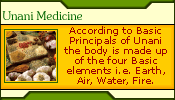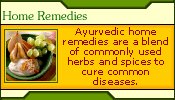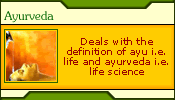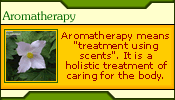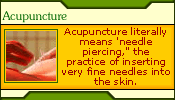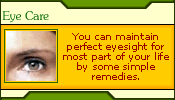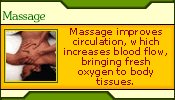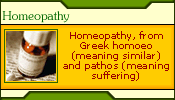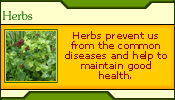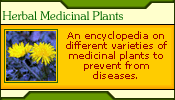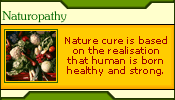|
Sodium Chloride , the chemical name for common salt, contains 39
per cent of sodium, an element which never occurs in free form in
nature. It is found in an associated form with many minerals especially
in plentiful amounts with chlorine. The body of a healthy person
weighing about 65 kg. contains 256 g. of sodium chloride. Of this
the major part, just over half, is in the extra-cellular fluid.
About 96 g. is in bone and less than 32 g. in the cells.
Sodium is the most abundant : chemical in the extra-cellular fluid
of the body. It acts with other electrolytes, especially potassium,
in the intracellular fluid, to regulate the osmotic pressure and
maintain a proper water balance within the body. It is a major factor
in maintaining acid-base equilibrium, in transmitting nerve impulses,
and in relaxing muscles. It is also required for glucose absorption
and for the transport of other nutrients across cell membranes.
Sodium can help prevent catarrh. It promotes a clear brain, resulting
in a better disposi tion and less mental fatigue. Because of its
influence on calcium, sodium can also help dissolve any stones forming
within the body. It is also essential for the production of hydrochloric
acid in the stomach and plays a part in many other glandular secretions.
There is some natural salt in every food we eat. Vegetable foods
rich in sodium are celery, cucumbers, watermelon, lemons, oranges,
grapefruit, beet-tops, cabbage, lettuce, corn, lady's fingers, apple,
berries, pears, squash, pumpkin, peaches, lentils, almonds and walnuts.
Animal food sources include shell fish, lean beef, kidney, bacon
and cheese. The sodium chloride requirements for persons living
in the tropics have been estimated at 10 to 15 g. per day for adults
who are engaged in light work and 15 to 20 g. for those engaged
in hard work. The requirements of children are from five to 10 g.
and those for adolescent boys and girls from 10 to 25 g.
Both deficiency and excess of salt may produce adverse effects
o the human body. Deficiencies of sodium are, however, rare and
may be caused by excessive sweating, prolonged use of diuretics,
or chronic diarrhoea. Deficiency may lead to nausea, muscular weakness,
heat exhaustion, mental apathy and respiratory failure. Over-supply
of sodium is a more common problem because of overuse of dietary
sodium chloride or common salt. Too much sodium may lead to water
retention, high blood pressure, stomach ulcers, stomach cancer,
harden- ing of arteries and heart disease.
In case of mild deficiency of sodium chloride, taking a teaspoon
of common salt in one half litre of water or any fruit juice quickly
restores the health. In severe conditions, however, administration
of sodium chloride in the form of normal saline by intravenous drip
may be restored to. The adverse effects of excessive use of sodium
chloride can be rectified by avoiding the use of common salt.
Sodium is required by the body, but most people have a far too
high intake of sodium (salt) in their diet.
Sodium is required for
Sodium is an electrolyte in the body and is required in the manufacture
of hydrochloric acid in the stomach, which protects the body from
any infections that may be present in food.
Deficiency of sodium
A deficiency is rare, but can easily happen with diarrhea, vomiting
or excessive sweating, and a shortage may lead to nausea, dizziness,
poor concentration and muscle weakness.
Dosage
The dosage underneath is the Recommended Daily Allowance (RDA),
but be aware that this dosage is the minimum that you require per
day, to ward off serious deficiency of this particular nutrient.
In the therapeutic use of this nutrient, the dosage is usually increased
considerably, but the toxicity level must be kept in mind.
An amount of about 2,400 milligrams is needed daily.
Toxicity and symptoms of high intake
Excessive sodium may cause high blood pressure, which may lead
to a host of health problems. Excessive long-term use of sodium
may also cause a loss of calcium from your body.
Best used with
It is interesting to note that current thinking is advising people
to up their intake of potassium to balance the effects of a higher
than normal sodium intake, or to counteract high blood pressure.
Additional magnesium and calcium is also advised.
A person should consume about half the amount of sodium in relation
to potassium and is best taken with vitamin D.
When more may be required
People consuming large amounts of sodium, should look at ingesting
extra potassium to balance it. If you are suffering from vomiting,
diarrhea or extreme sweating you may require more sodium. People
taking lithium for the control of bipolar depression should not
be on a sodium restricted diet - but please discuss this with your
medical practitioner.
Other interesting points
Although a low sodium diet should be strived for, it is wise to
start reading food labels and to see the sodium level in these foods.
Preserved and processed foods make excessive use of salt in the
preparation of the foods, and although you might not be adding extra
salt to these products, they are already loaded with sodium.
Sodium food sources
Sodium is found in table salt, anchovies, bacon etc.
|



